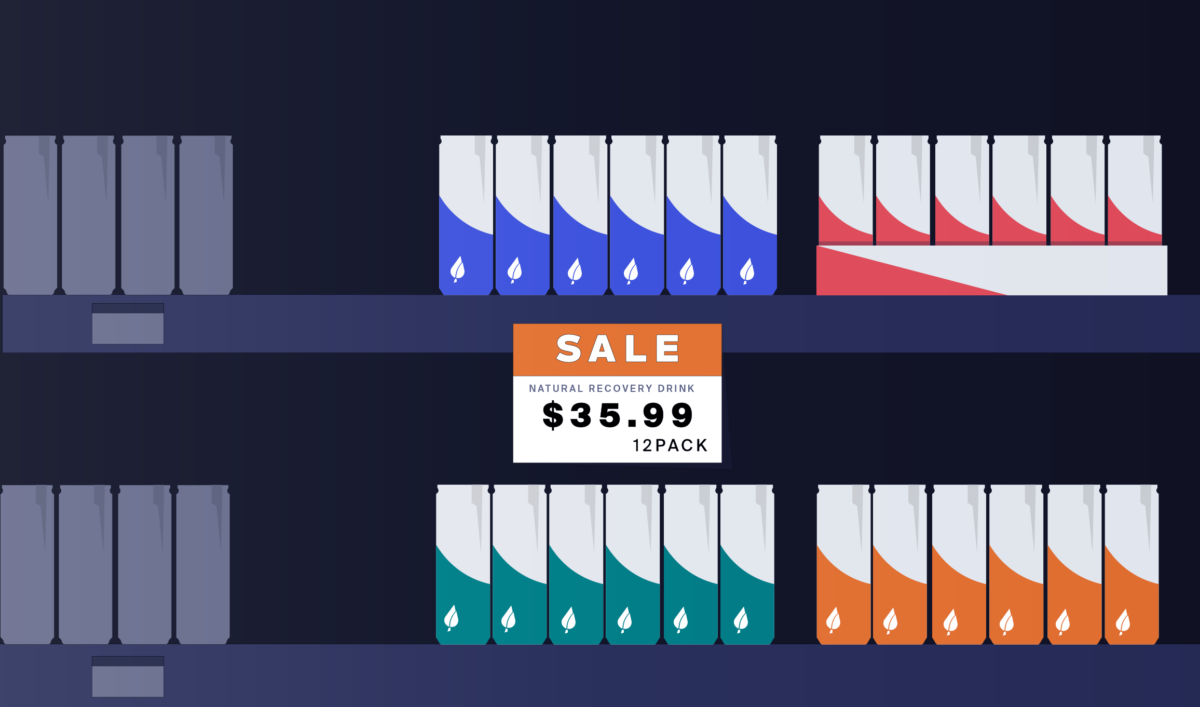Ware2Go’s series, Conversations in Commerce, shines a light on the expertise of its merchant partners in the areas of entrepreneurship, leadership, sales channels, and more . In this post, David Block of Volkman Pets shares his top tips for a winning retail distribution strategy.
Is Your Business Ready for Retail Distribution?


Why You Need a Retail Distribution Strategy
Whether you’re managing a brand with a legacy reputation or a high-growth startup, launching a retail distribution strategy is likely part of your long-term growth plan. Multichannel selling is the only way to compete in the market today, and even digital native brands have begun to see the importance of retail distribution as part of an omnichannel strategy.
The future of brick and mortar shopping looks bright, with younger generations showing an interest in in-store shopping. According to CNBC, 81% of Gen-Z shoppers prefer to shop in-store, and 73% of of Gen-Z shoppers discover new brands in-store. According to a 2021 consumer survey, shoppers say when they discover new brands in-store, they are drawn to:
- Price (68%)
- Promotions or product placement (50%)
- Package design (43%)
- Sustainable business practices (34%


Ahead, I’ll discuss how you can prepare your brand to be attractive to retail distributors so they’ll be ready to go to bat with you to fight for proper signage, product placement, and promotions to attract new customers to your brand. Having a clear understanding of your value proposition and place in the market are the key to growing across multiple channels and eventually securing those coveted retail partnerships. If you think retail distribution may be the next step for your brand, ask yourself these eight questions before taking the plunge.
1. Is Your Product Ready for Retail Distribution?
Quality assurance is of utmost importance in retail distribution. An oversight at any phase of the production process — from procurement to packaging, can potentially damage your brand image for a long time. Retailers and consumers can be forgiving, but there’s no need to risk finding out how far that patience extends. Ensuring your product is at the highest quality, ready for the end user and meets the need for the solution your product offers is key to long-term retail partnerships and consumer preference.
2. Is Your Packaging Ready for Retail Distribution?
Package compliance is a must. UPC, inner and outer case, FDA regulations that vary by state are all considerations that must be thoroughly investigated. Finding a trusted fulfillment partner will also ensure that your products are being packaged and handled correctly to avoid damage in transit to avoid costly returns and unsatisfied customers.
Equally important is the verbiage and information on the package. Expiration dates, how to use, and a path for inquiries are all important for the end user. In my industry, contemporary packaging is important to shoppers. Fastidious pet parents want to see the product, feel the product, read the ingredient deck, and know where it is manufactured. When creating or designing a package, a good rule of thumb is “eye appeal is buy appeal”. Does it attract, engage, inform, and convince you to buy? How does your product package differentiate from the pack?
3. Can Your Manufacturer Meet the Demand?
Demand planning is essential. Your supply chain must be prepared for the potential influx of demand that comes with retail distribution. If your retail partners can’t trust you to keep product on the shelves, those relationships could turn sour quickly. In forecasting and planning for increases in demand, work with your supplier to establish a goal for the volume or tonnage increase. If you are looking at a 10x outcome, review with your production and manufacturing team to ensure your newfound demand turns into sales and shipments, not just unfulfilled invoices. This is one of the most critical steps in the process of growth.
4. Can Your Fulfillment Network Meet the Demand?
Fulfillment expectations have evolved rapidly and drastically since I’ve been in this business. 2-day delivery is no longer an exception — it has rapidly become the expectation. Besides fast shipping capabilities, your fulfillment network must also have the flexibility to manage LTL, pallet, and truckload capabilities to be relevant in the marketplace today. Finding a single partner that can handle multiple transport modes within one network will save you time and money as you grow and expand across multiple channels.
5. Is There Demand for Your Product in Brick and Mortar Stores?
You need to fully understand the demand for your product before engaging in distribution efforts. Having a clear understanding of your product’s place in the market will help you avoid jumping into retail partnerships before your brand is ready. Proper evaluation of the market, competition, retail pricing, shipping costs, margin harvest are all critical parts of making the decision. Engaging a third-party firm to conduct retail surveys, consumer feedback and retailer receptivity can clearly identify your next steps.
6. What Should You Look for in a Distributor?
Above all else, you are looking for a partnership — one that is based on synergy, support, and flexibility. Distribution is a very challenging machine, and it has daily hurdles to ensure fulfillment rate is acceptable, share of mind by the sales team is high, and that at the end of the day the business is growing. I have spent over 10 years in the pet food and supply distribution world and have developed a high level of respect for the distribution process.
Ideally you will have manufacturer sales representatives working alongside the distributor’s sales team. Depending on the size of your organization you may not be able to cover all territories or states, but often reaching out to broker groups can fill that gap. Open, honest communication is also essential, and sometimes tough conversations need to take place. At the end of the day, If you can fill a demand at retail and provide reasonable margin, it can lead to a healthy distributor relationship.
7. How Do You Make Sure Your Product Is Being Promoted?
With traditional pet food and supply distributors having as many as 10,000 or more skus, I’ve found that it can be difficult to get a product to the top of the distributor’s list of priorities. Being at the forefront of their mind depends significantly on the weighted value that your product brings to the table — units, volume, market share, and margin. You must realize your value proposition in the space you play in and have an annualized plan. If you have a plan that is flexible, targeted at certain times of the year and/or seasonality it can greatly increase your chance for success.
Additionally, many reps will keep your product top of mind if you can guarantee 2-day delivery to the store. This way retailers know they can start selling your items immediately and won’t have to risk running out of stock while waiting for replenishment shipments.
8. When Is It Time to Start Looking for a New Distributor?
If you are new to a distributor network, you must have a two-year plan that targets mutual goals and drives outcome. Often manufacturers elect to distribute through more than one distributor to ensure marketplace coverage and healthy competition. If you are engaged with the distributor leadership, sales, and operations team and mutual goals are not being achieved, it may be time to consider alternative options. I have always had faith in the distribution platform and work hard to protect our mutual success. Looking or interviewing new distributors is a consistent behavior, placing your energy with the one who “got you to the dance” is always healthy.
Retail Distribution FAQ’s
What does a retail distributor do?
A retail distributor represents manufacturers and merchants looking to sell their products in retail stores. The distributor helps retailers find new products to keep their inventory fresh and helps merchants get more exposure by getting them on the shelves of stores. Retailers seldom meet directly with manufacturers or merchants, so a retail distributor can help open doors as a trusted source that retailers rely on to discover new brands.
What is a retail distribution strategy?
A retail distribution strategy is the method that a merchant or manufacturer chooses to get their products into the hands of consumers. Some merchants go direct to consumer (often via their own ecommerce site or through ecommerce marketplace sales), other merchants choose the path of traditional brick and mortar retail. Traditional retail channels tend to require more intermediaries than direct-to-consumer, including wholesalers and retail distributors, and therefore products sold through brick-and-mortar retailers are often more expensive. However, today’s consumers discover new brands and products across multiple sales channels, and the only way to meet all of your potential customers is through a multichannel approach that includes both D2C and retail channels.
What are the three forms of retail distribution strategies?
Three of the most common retail distribution strategies are intensive distribution, selective distribution, and exclusive distribution.
An intensive distribution strategy attempts to saturate the market with a product, getting into as many retail locations as possible. This is often an effective strategy for products in crowded categories at low price points where consumer loyalty is relatively low. In these categories, consumers are more likely to try a new brand if their preferred brand is out of stock or if a new brand is on promotion.
A selective distribution strategy is the middle ground between intensive distribution and exclusive distribution. Merchants will distribute their products to only select retailers or in select areas. This distribution strategy is best suited for higher-end brands that consumers will specifically seek out or brands looking to build strong relationships with retailers and create an association between their brand and particular retailer.
An exclusive distribution strategy limits retail distribution to a single retailer. It is best suited for premium or luxury brands in niche markets. The sense of exclusivity is a perceived value add for luxury shoppers, and brand equity will drive shoppers to seek out products with exclusive retail distribution.
About the Author
David Block is the Director of Sales, Marketing, and Social at Volkman Pets. He has 10 years of distribution experience in the pet supplies industry, and in his time at Volkman Pets has reimagined the brand to best represent their place in the pet supplies space and created a path to nationalizing their Avian Science portfolio.
To find out how Ware2Go can help your business streamline fulfillment across all sales channels, reach out to one of our fulfillment experts.

